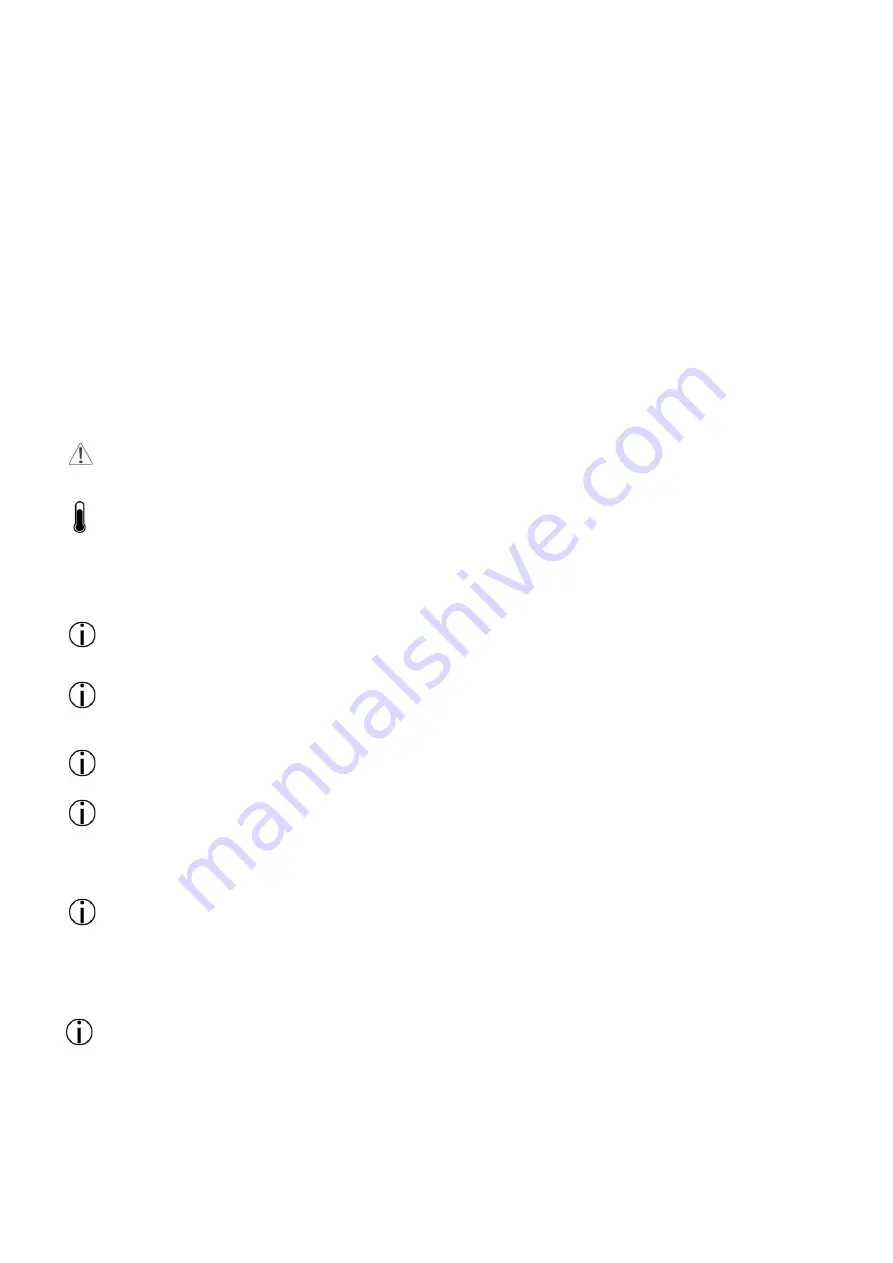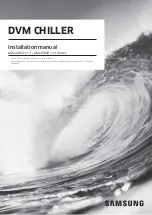
8
indirect contact with the foodstuffs must be cleaned very well along with the surrounding areas . These operations
must only be performed using detergents that can be used with foodstuffs, avoiding inflammable products or those
that contain substances that are harmful to personal health.
In the case of prolonged inactivity, as well as disconnecting all the supply lines, it is necessary to accurately clean
all internal and external parts of the appliance.
Recommendation for Use
Prolonged Inactivity
If the appliance is not used for a long time, proceed as follows:
a. Use the automatic isolating switch to cut off the connection to the main electrical line.
b. Clean the appliance and surrounding areas thoroughly.
c. Spread a thin layer of cooking oil onto the stainless steel surfaces.
d. Carry out all maintenance operations.
e. Leave the doors ajar to prevent the formation of mould and /or unpleasant odor.
Recommendations for normal use
To ensure the correct use og the appliance, follow the recommendations:
Do not obstruct the zone in front of the condensing unit so that the heat disposal from the
condenser is maximized. Keep the zone clean.
Do not insert food materials above 65°C as well as overloading the appliance as it can make the
temperature drop process be longer. If possible, cool the food materials outside the appliance to
the set temperature.
Check the planarity of the appliance rest surface.
Make sure the food does not touch the inner walls of the appliance to not obstruct the circulation of
cold air.
There must be a sufficient space between the basins and trays used to guarantee a sufficient flow
of cold air on the entire product. Therefore avoid the following positions of trays and/or basins
stated below.
Do not clog the inlet of the evaporator fans.
Products that are more difficult to chill because of their composition and size should be placed in
the center.
Limit the number of times and the duration of time opening the door.
Blast chilling data refer to standard products (low fat) with a thickness below 50mm: therefore
avoid overlaying products or the insertion of pieces with a much higher thickness. This would lead
to an extension of blast chilling times. Always distribute the product well on the trays or basins or
in the case of thick pieces decrease the amount to blast chill.
After blast chilling/shock freezing the product, it can be stored in a preservation cabinet after
having been duly protected .A tag should be applied describing the contents of the product,
blast chilling/shock freezing date and expiry date. When the product has been blast chilled it must
be preserved at a constant temperature of +2°C
,
while if it has been shock frozen it must be
preserved at a constant temperature of -20°C.









































